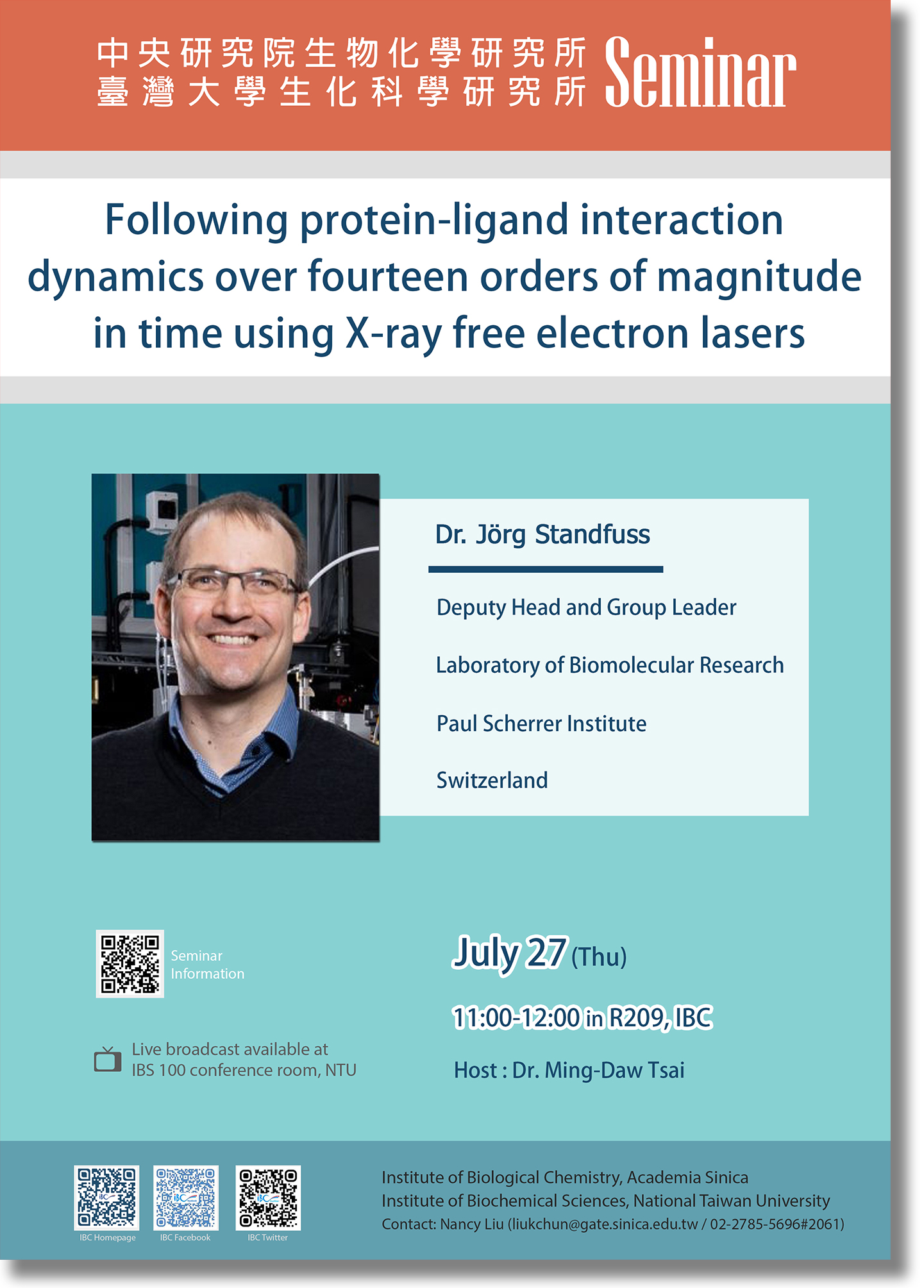2023-07-27 11:00 ~ 2023-07-27 12:00
地點: 生化所209研討室
主講人: Jörg Standfuss博士
主講人背景: 瑞士Paul Scherrer Institute生物分子研究實驗室主任
演講主持人: 蔡明道院士
演講摘要:
The molecular structure of protein-ligand complexes provides much insight into the biochemical processes in living cells. However, to understand protein activation, we also need to resolve how proteins interact with their many small molecule ligands over time. In this presentation, I will outline the opportunities and challenges of using X-ray free electron lasers to follow protein-ligand interaction dynamics at near-atomic spatial and temporal resolution in the femtosecond range.
Our first target to establish the technology was bacteriorhodopsin, a project where we resolved the mechanism of light-driven proton pumping from the photochemical isomerization of retinal in the femtoseconds, up to the proton uptake reaction in the millisecond range. In piloting experiments at the Swiss X-ray free electron laser, we have studied how nature adapted related rhodopsins to pump sodium or chloride ions across membranes or act as the principal photoreceptor in vision.
The field of photopharmacology has developed a wide range of light-switchable molecules for drug delivery. To demonstrate how relevant reactions can be triggered in non-photoactive proteins, we have followed the cis-trans isomerization of the photochemical affinity switch azo-combretastatin A4 and the resulting conformational changes in the anti-cancer target tubulin. Similar azobenzene-based photoswitches to control kinases, channels, or G protein-coupled receptors, will be important tools to study a range of other pharmacologically relevant targets.-Dr. Jörg Standfuss
洽詢人員: 劉小姐
洽詢電話: 27855696#2061
洽詢信箱: liukchun@gate.sinica.edu.tw

 中央研究院 生物化學研究所
中央研究院 生物化學研究所

 中央研究院 生物化學研究所
中央研究院 生物化學研究所
